A visit to the villages of Mishing and Garo are a great way to come up close with some of the tribes of Assam.
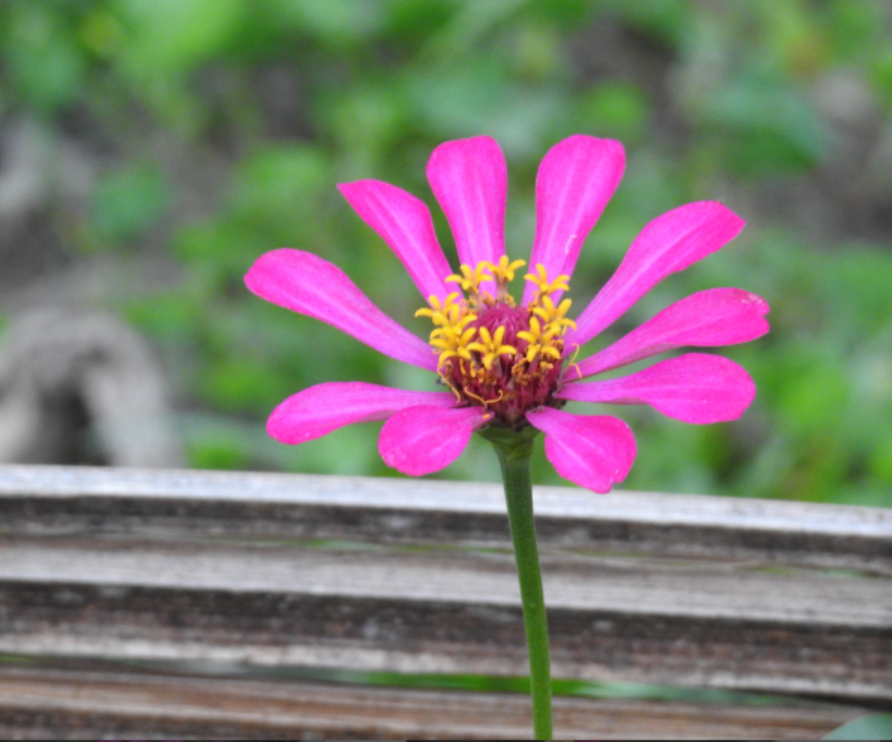
My first visit to the North East came when I received an invite from Novotel Guwahati GS Road for a tea trail experience. Curated in association with Wild Mahseer, a heritage home stay inside the Eastern Himalayan Botanic Ark a Balipara Foundation initiative, this trip was my first introduction to the North Eastern village life. Under the initiative of Balipara foundation and Mahila Shakti Kendra and supported by Assam Investment Advisory Fund, there is a homestay each in Mishing, Garo and Nyishi village which started in April 2018. Aimed to promote tourism and generate local employment at the district level they also organized a visit to two of these villages.
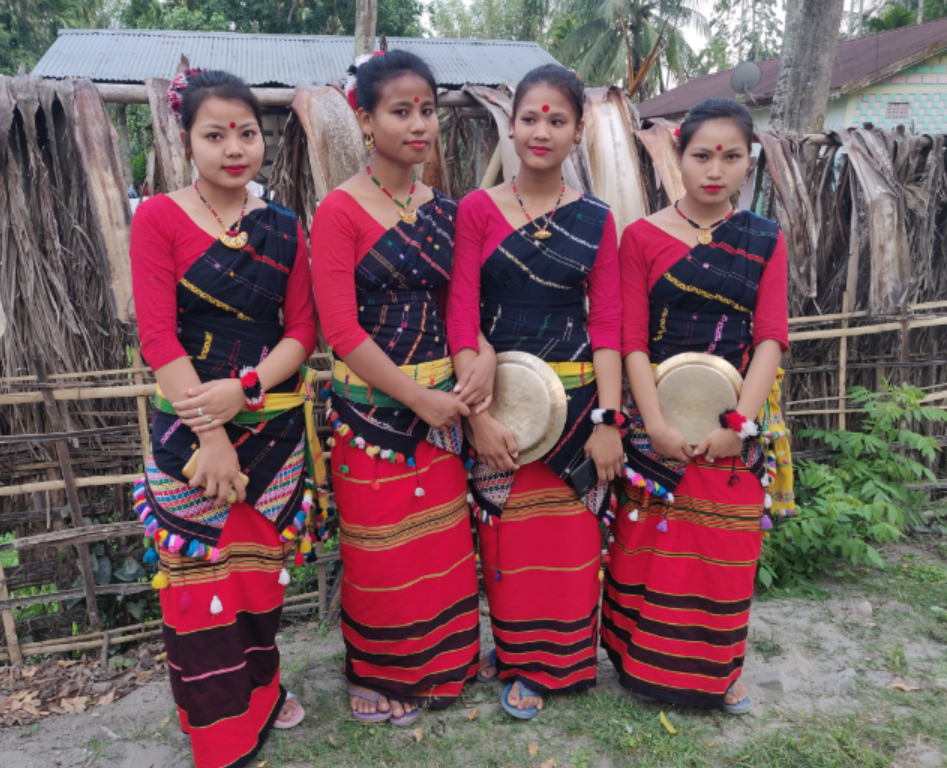
Mishing Community Village
It was close to evening when I reached the Mishing community village and started walking towards the home of the village head. On either side of the path was dense greenery, beautiful homes, stunning wild flowers and a bird song that accompanied me through out. After all I was in Assam’s first certified green village and true to its title, this village is home 700+ endemic species of plants, has an efficient rainwater harvesting system waste management system and an ethnic way of life. After we were given a traditional welcome, we decided to walk around the village where we meet the local inhabitants who are friendly and little kids playing with puppies reminding me that the things that make you happy are always free. Back at the home of the village head, that has rows of potted colourful flowering plants, we are served apong, a rice beer with medicinal wild herbs and the local women get ready for a dance performance. Clad in red and black gamchas the local garment, the young girls dance to local tunes and it is hard not to join in. The home stay here is a basic bamboo hut built on stilts and I also see a local woman weaving the gamcha here. In fact you can also explore the traditional handicrafts, handlooms and jewellery as well as traditional fishing and agricultural tools that are laid out in the village homes. You can even buy them as a souvenir. For me however it was a blue throated barbet that I spotted in fading light at dusk will always be a compelling memory from this beautiful village.
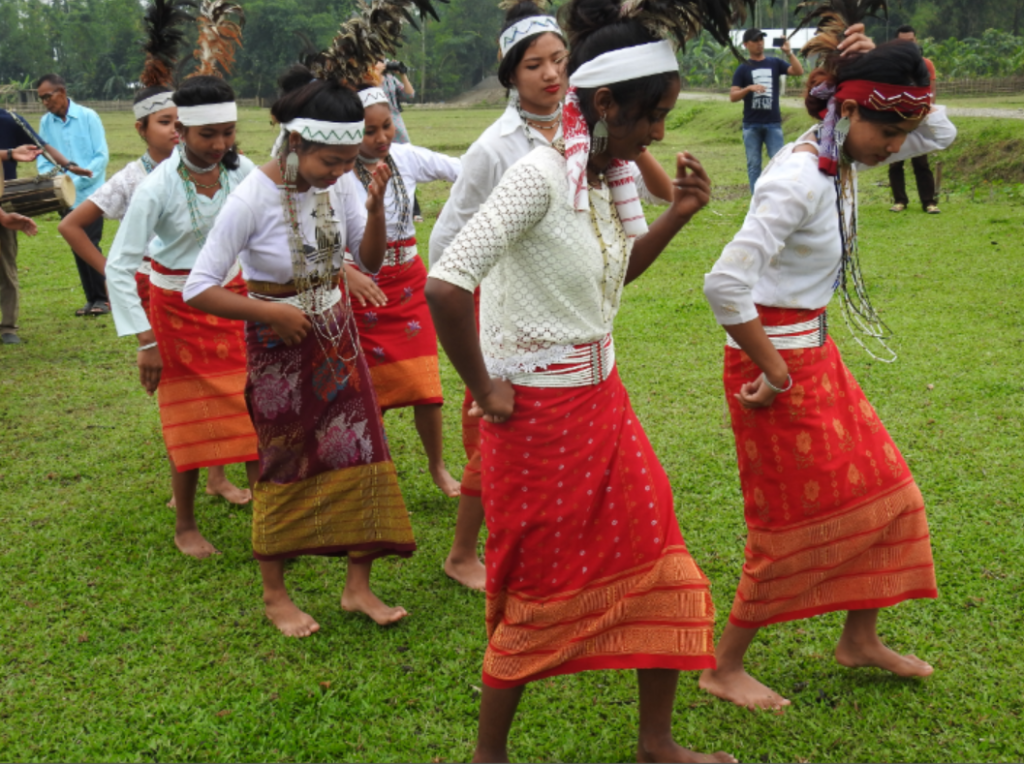
Garo Community Village
The next day morning, I headed to discover the hidden treasures of the Garo village. A long walk amidst lush greenery and endless fields leads me to the only church of the village, the Duwangbari Baptist church that was established in 1948. Here while chatting to the local village folk I learn about local and medicinal plants like Agaru used in making incense sticks, medicinal Makhiyoti. The small village is home to about 190 Garo families and I am lucky to see a beautiful Wangala dance in the rice fields where the dance moves perfectly syncronise with the flute and drums. The Garo are a tribe that is originally from Meghalaya but have become part of Assam and speak an Assamese dialect as well. Back in the village, I am treated to a meal of traditional vegetarian snacks including the rice flour sweet dish as well as pakoras served with hot tea. After we have tucked into the food, the locals demonstrate some traditional weaving techniques as well. Incidentally you can also but the local garments and textiles as well from the villagers. The best part is that you are also given a live demonstration of how the locals make organic colours from vegetables and leaves of the plants that grow here. The process of making the dyes was demonstrated as well. Using a small mortar and pestle the leaves of the henna tree was crushed and this released a reddish texture which was then boiled with water. The longer the leaves are boiled, the deeper is the colour. After this some alum is placed on a strainer (to help hold the colour) and the boiled leaves are strained through the same. The thread is then dunked into the liquid and it magically takes on a nice red hue. The same process is followed with onion peels for a pink hue, turmeric for yellow. Alum is not required for turmeric as the colour is strong inherently and grey comes from a seed that is found locally. While one may associate Assam with its famed Kaziranga National Park, there is so much more to discover in this state. This is what I learnt when I visited the interiors of the state and came up close with its people who truly epitomize the state tourism’s catch phrase – ‘Awesome Assam.’
This story first appeared in Discover India’s North East here:
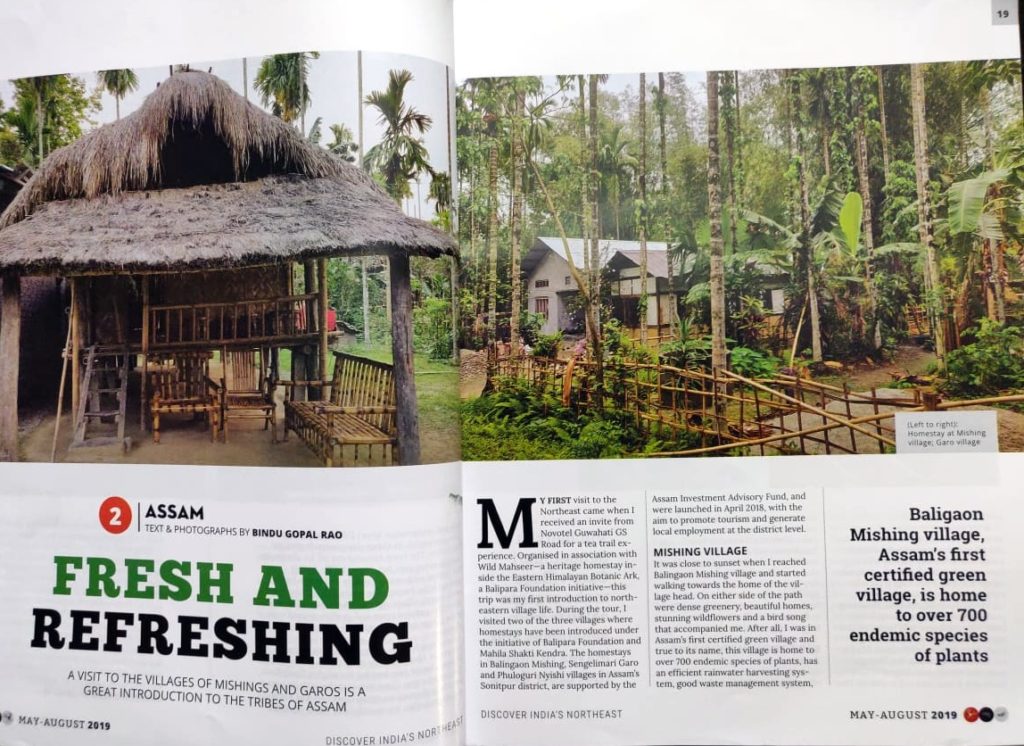
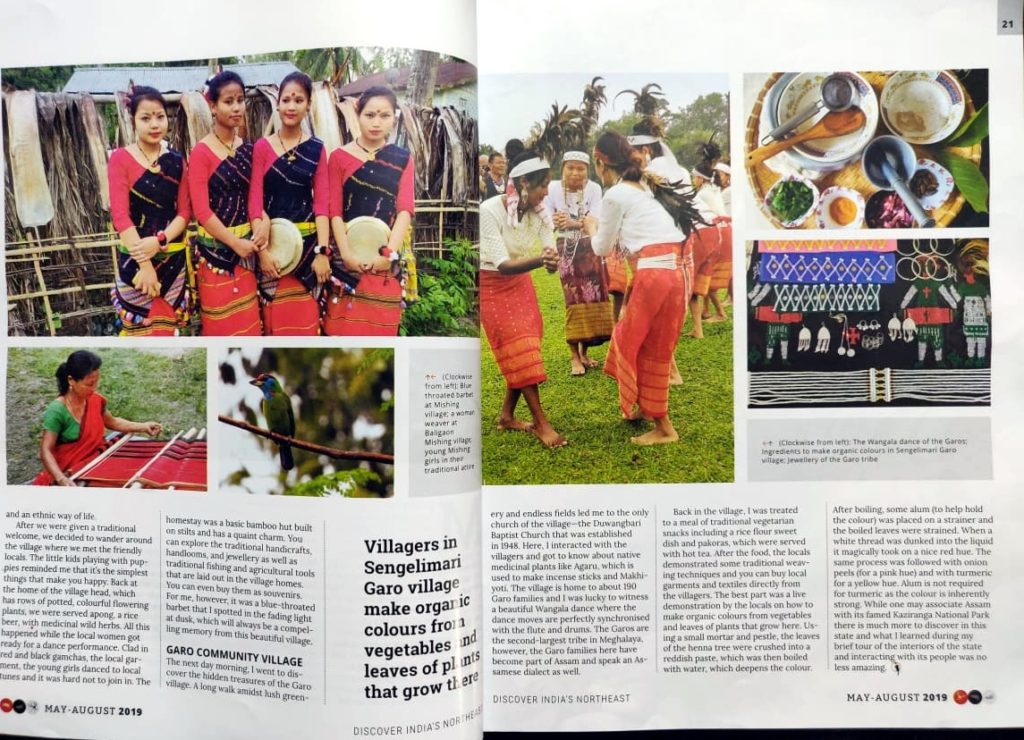

Beautiful article, thanks a lot.
Do you have any contact details?
Thank you, what kind of contact details do you need?